

Analytical & Physical Seminar
Thursday, December 9, 3:30 - 4:30pm, ZOOM
Professor
University of Michigan
Abstract: Medicines of the future will rely heavily upon our ability to quickly assess the structures and stabilities of such complex macromolecular machines, as well as the influence of large libraries of conformationally-selective small molecule binders and protein-based biotherapeutics. Such endeavors are nearly insurmountable with current tools. In this presentation, I discuss recent developments surrounding collision induced unfolding (CIU) methods that aim to bridge this technology gap. CIU uses ion mobility-mass spectrometry (IM-MS) to measure the stability and unfolding pathways of gas-phase proteins, without the need for covalent labels or tagging, and consuming 10-100 times less sample than almost any other label-free technology. Recent developments in high-throughput CIU screening methods, their ability to track alterations in target structure over a wide array of proteoforms, and software developments that seek to enhance CIU information content, will be discussed.
h-index: 48 Total Articles: 123 Total Citations: 8167 (Web of Science, Nov. 2021)
h-index: 56 Total Citations: 11784 (Google Scholar Citations, Nov. 2021)
Organic Seminar | HHMI Seminar
Friday, December 3, 3:30 - 4:30pm, WEL 2.122 + ZOOM
Alice Watson Kramer Distinguished Professor
Purdue University
A significant challenge in the development of effective antibacterial agents arises from bacterial pathogens that have evolved to inhabit mammalian cells, such as phagocytic macrophages.Within these intracellular safe havens the bacteria reproduce and form a repository, and are able to evade the host immune response as well as a number of antibiotic drugs. Therefore, there is a great need to develop antibiotics with the ability to enter mammalian cells and target intracellular pathogens at their specific sub-cellular site. We have developed a class of molecules, cationic amphiphilic polyproline helices (CAPHs), that enter mammalian cells through both direct transport and endocytosis. We have determined that CAPHs also have potent antibacterial activity in vitro with a non-lytic mechanism of action. This dual mode of action, non-lytic antibacterial activity with the ability to localize within mammalian cells, provided us with agents with a pronounced ability to target and kill pathogenic intracellular bacteria within human macrophages.
Publications (Google Scholar Citations)
ORCID: https://orcid.org/0000-0003-4958-7175
h-index: 38 Total Articles: 117 Total Citations: 4062 (Web of Science, Nov. 2021)
h-index: 45 Total Citations: 6496 (Google Scholar Citations, Nov. 2021)
Organic Seminar | HHMI Seminar
Friday, December 3, 3:30 - 4:30pm, WEL 2.122 + ZOOM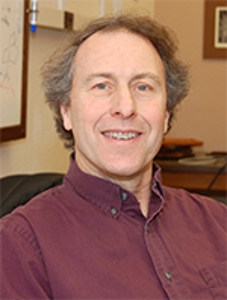
Associate Professor
Purdue University
Abstract: Using a combination of X-ray crystallography and structure-based drug design, we have developed a new class of antimicrobial agents that work through inhibition of the class II HMGR CoA Reductase enzyme present in several of the drug-resistant ESKAPE pathogens. Studies on these antimicrobials show their efficacy against biofilms and their ability to reverse resistance to beta-lactam antibiotics in Methicillin-Resistant Staph. Aureus (MRSA). Evidence will also be presented for a secondary mode of action of these agents.
ORCID: https://orcid.org/0000-0003-0034-0243
h-index: 22 Total Articles: 42 Total Citations:1287 (Web of Science, Nov. 2021)
Analytical & Physical Seminar
Thursday, December 2, 3:30 - 4:30pm, TBD
Assistant Professor
Iowa State University
PhD UT Austin, 2010 (Crooks)
Abstract: Sensors that leverage the influence of a biorecognition event on charge transport, such as field-effect transistors and nanoporous membranes, are among the most sensitive because they translate localized binding into a change in a system-scale property. However, fabrication and custom functionalization of these sensors is not trivial, and their integration with protocols that pre-enrich target species and facilitate their transport to the biorecognition site is an active area of research. In this presentation, we demonstrate that ion concentration polarization (ICP) in the presence of fluid flow drives focusing and efficient capture of target nucleic acids within a bed of oligoprobe-conjugated beads. A key finding is that ion conduction along the surface of the bioconjugated beads is the dominant contributor to current to the electrode that drives ICP, under the condition of ICP-induced depletion of ions from the bulk solution. Therefore, hybridization of a target nucleic acid (a polyanion) to the bead surface leads to a shift in the slope of the current-voltage curve. Therefore, this approach is versatile in that a target nucleic acid can be detected electrically, in the absence of a label. The resulting approach allows for a plug-and-play nucleic acid sensor using off-the-shelf bioconjugated beads and simple electronics, making it advantageous for point-of-care testing.
Publications (Google Scholar Citations)
ORCID: https://orcid.org/0000-0003-2801-8280
h-index: 16 Total Articles: 33 Total Citations: 1153 (Web of Science, Nov. 2021)
h-index: 18 Total Citations: 1544 (Google Scholar Citations, Nov. 2021)
Organic Seminar - Rowland Pettit Centennial Visiting Professorship
Friday, November 19, 3:30 - 4:30pm, WEL 2.122 + ZOOM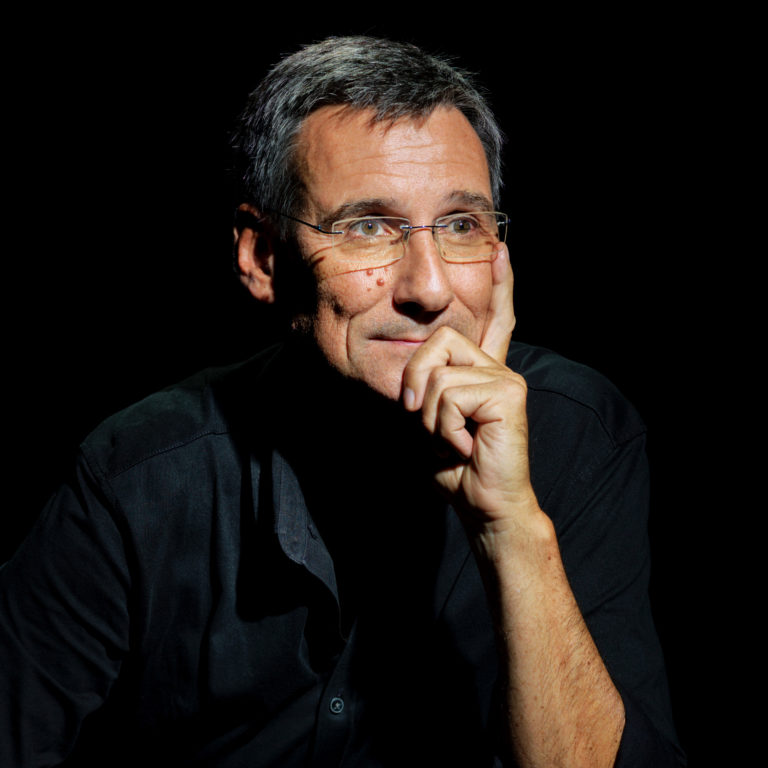
Professor
Technion - Israel Institute of Technology
We are concerned with the design and development of new and efficient stereo- and enantioselective strategies for the synthesis of important complex molecular structures. We are particularly interested in developing carbon-carbon bond forming processes, which efficiently create multiple stereocenters in a single-pot operation. Deep understanding of reaction mechanisms gives insight into the origins of chemo- and stereoselectivity, and governs optimization towards the most efficient and general protocols for our methodologies. Our vision is that we should provide an answer to challenging synthetic problems but it has to be coupled with unique efficiency and elegance.
Publications (Google Scholar Citations)
h-index: 52 Total Articles: 224 Total Citations: 9074 (Web of Science, Nov. 2021)
h-index: 63 Total Citations: 12772 (Google Scholar Citations, Oct. 2021)
Inorganic Seminar
Wednesday, November 17, 3:30 - 4:30pm, WEL 2.122 
Assistant Professor
Stony Brook University
Abstract: Stable and radioactive rare earths have attractive properties for diagnostic imaging and radiotherapy applications. Our lab applies a cross-disciplinary approach that combines physical inorganic chemistry, coordination chemistry, chemical biology and preclinical imaging to transform aqua-ions into tools for non-invasive diagnostic imaging, optical probes for image-guided surgical resection and targeted radiotherapy of cancers.
Publications (Google Scholar Citations)
h-index: 16 Total Articles: 41 Total Citations: 851 (Web of Science, Nov. 2021)
h-index: 22 Total Citations: 1625 (Google Scholar Citations, Oct. 2021)
Analytical & Physical Seminar
Thursday, November 11, 3:30 - 4:30pm, ZOOM
Assistant Professor
University of Arizona
Abstract: Due to their important biochemical roles, membrane proteins are important drug targets. Although it is clear that lipids can influence membrane protein function, the chemistry of lipid binding remains difficult to study because protein-lipid interactions are polydisperse, competitive, and transient. We have been developing new approaches to quantify protein-lipid interactions in bilayers and understand how membrane proteins remodel their surrounding lipid environment. In one new approach, we use mass spectrometry (MS) to quantify the exchange of lipids between lipoprotein nanodiscs with and without an embedded membrane protein. Shifts in the lipid distribution towards the membrane protein nanodiscs reveal lipid binding, and titrations allow measurement of the optimal lipid composition for the membrane protein. Second, we use native MS to ionize membrane protein nanodiscs with heterogeneous lipids. Ejecting the membrane protein complex with bound lipids in the mass spectrometer revealed enrichment of specific lipids around the membrane protein. Ultimately, we expect these unique combinations of nanodiscs and MS will provide new insights into the chemistry and selectivity of membrane protein-lipid interactions.
Publications (Google Scholar Citations)
h-index: 21 Total Articles: 47 Total Citations: 1367 (Web of Science, Nov. 2021)
h-index: 23 Total Citations: 2091 (Google Scholar Citations, Oct. 2021)
Inorganic Seminar
Wednesday, November 10, 3:30 - 4:30pm, WEL 2.122 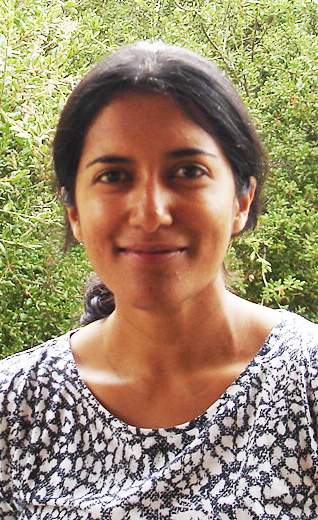
Associate Professor
Stanford University
We approach solid-state materials using the tools of synthetic molecular chemistry and design hybrid materials featuring properties of both molecules and extended solids. We target materials for applications in clean energy such as sorbents for environmental pollutants, electrodes for secondary batteries, phosphors for solid-state lighting, and absorbers for photovoltaics. We also design discrete molecular centers for the catalytic activation of small molecules relevant to clean energy cycles. Exploration is at the forefront of our research efforts and we work with researchers in disciplines such as applied physics, geology, and materials science to drive the discovery of new materials. We synthesize organic, inorganic, and hybrid materials using solution- and solid-state techniques, including glovebox and Schlenk-line methods. We determine the structures of our materials using powder- and single-crystal x-ray diffraction. We also use a host of spectroscopic and electrochemical probes, imaging methods, and film deposition techniques. We further characterize our materials under extreme environments and in operating devices to tune new materials for diverse applications in renewable energy.
Publications (Google Scholar Citations)
h-index: 40 Total Articles: 66 Total Citations: 9571 (Web of Science, Nov. 2021)
h-index: 42 Total Citations: 11,939 (Google Scholar Citations, Nov. 2021)
HHMI Seminar
Anslyn, Iverson, Sessler Lectureship in Chemistry
Friday, October 29, 3:30 - 4:30pm, Hybrid Seminar: WEL 2.122 / Zoom
Professor
Trinity University
Abstract: Applications involving supramolecular chemistry rely on the ability to predict the selective interaction between molecules. Although it is straightforward to identify the binding sites in small molecules, the binding sites in proteins are complex and depend on the folding of the polypeptide chain. We and others have sought to uncover the principles by which the molecular recognition of polypeptides may be predicted from their constituent sequences of amino acids. This seminar will present the lessons learned from studies of polypeptide recognition with synthetic receptors, which circumvent the limitations inherent to protein folding and enable a range of applications.
Publications (Google Scholar Citations)
h-index: 26 Total Articles: 38 Total Citations: 2802 (Web of Science, Sep. 2021)
h-index: 28 Total Citations: 3552 (Google Scholar Citations, Sep. 2021)
Analytical & Physical Seminar
Thursday, October 28, 3:30 - 4:30pm, Hybrid Seminar: WEL 2.122 / Zoom
Assistant Professor
University of North Carolina Chapel Hill
PhD UT Austin, 2017 (Bard)
Abstract: Complex, multiphase environments permeate nature, and chemical reactivity in such environments is unique. For instance, liquid phase separation occurs in cells to promote cellular reactions critical to life. An equally important avenue of inquiry is how chemical reactivity changes under confinement compared to bulk phases. We have developed new measurement science tools, aided by the combination of electrochemistry, microscopy, and simulation, to elucidate reactivity in complex, multiphase systems. This talk will detail our progress in understanding how chemical reactivity (e.g.,, accelerated bimolecular reactions, enhanced nucleation rates, & electrosynthesis of high entropy alloys, electrogenerated chemiluminescence) changes in small volumes and how one can use such changes to promote special chemistry.
Publications (Google Scholar Citations)
h-index: 21 Total Articles: 54 Total Citations: 1377 (Web of Science, Sep. 2021)
h-index: 22 Total Citations: 1677 (Google Scholar Citations, Sep. 2021)
Organic Seminar
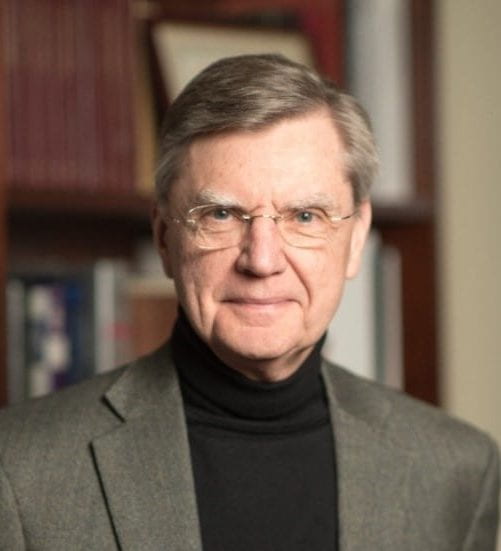 Friday, October 15, 3:30 - 4:30pm, WEL 2.122
Friday, October 15, 3:30 - 4:30pm, WEL 2.122
Professor
Northwestern University
Abstract: More than a half-century ago, the NMR spectra of diamagnetic products resulting from organic radical pair reactions were observed to have strongly enhanced absorptive and emissive resonances. At the same time, photogenerated radical pairs were discovered to exhibit unusual electron paramagnetic resonance (EPR) spectra having similar resonances. These non-Boltzmann, spin-polarized spectra were observed in both chemical systems as well as in photosynthetic reaction center proteins following photo-driven charge separation. Subsequent studies of these phenomena led to a variety of chemical electron donor-acceptor model systems that provided a broad understanding of the spin dynamics responsible for these spectra. When the distance between the two radicals is restricted, these observations result from the formation of spin-correlated radical pairs (SCRPs) in which the spin-spin exchange and dipolar interactions between the two unpaired spins play an important role in the spin dynamics. Early on, it was recognized that SCRPs photogenerated by ultrafast electron transfer are entangled spin pairs created in a well-defined spin state. These SCRPs can serve as spin qubit pairs (SQPs), whose spin dynamics can be manipulated to study a wide variety of quantum phenomena intrinsic to the field of quantum information science. This lecture will highlight the role of SCRPs as potential SQPs, giving examples of possible quantum manipulations using SQPs, and providing some thoughts on future directions.
Publications (Google Scholar Citations)
h-index: 104 Total Articles: 641 Total Citations: 44,391 (Web of Science, Sep. 2021)
h-index: 122 Total Citations: 58,397 (Google Scholar Citations, Sep. 2021)
Analytical & Physical Seminar
Thursday, October 14, 3:30 - 4:30pm, WEL 2.122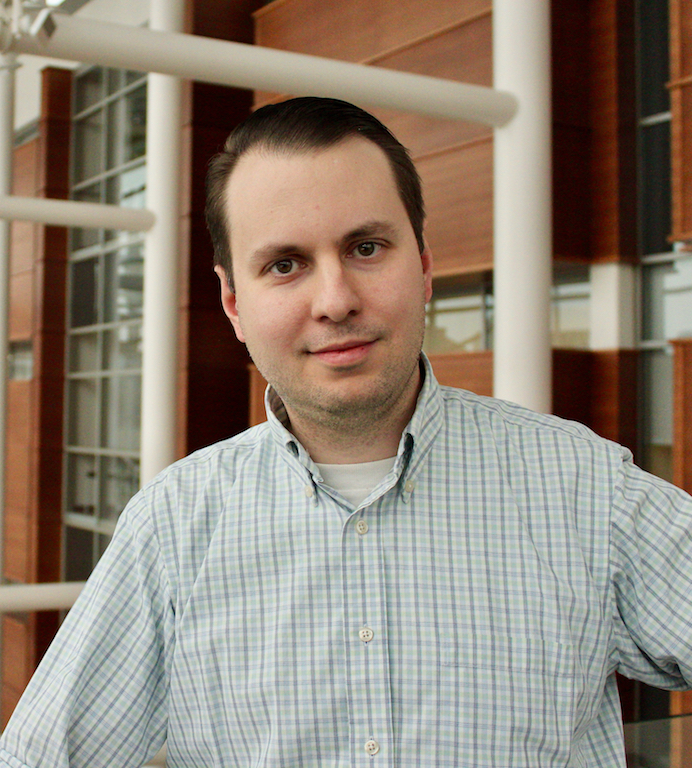
Assistant Professor
Wayne State University
Materials Structural Dynamics Laboratory
Research in the Materials Structural Dynamics Laboratory (MSDL) strives to uncover the fundamental physical processes that lead to useful properties in emerging materials. New materials with useful and exotic properties remain necessary for the development of next generation technologies in electronics, photonics, and information science. The discovery of new materials also means the development and use of tools to explore the physical mechanisms from which their properties derive. Student and postdoctoral researchers in the MSDL will use experimental, theoretical, and computational methods to tackle problems that span the fields of chemistry, physics, materials science, and optics to connect physical mechanisms to material properties.
Publications (Google Scholar Citations)
h-index: 9 Total Articles: 26 Total Citations: 219 (Web of Science, Sep. 2021)
h-index: 10 Total Citations: 346 (Google Scholar Citations, Sep. 2021)
Guest Seminar
Friday, September 24, 11:00am - noon, ZOOM
Senior Editor, Nature Energy
I will introduce Nature Energy in the context of the Nature Research portfolio of journals. I shall also discuss editorial processes and offer some tips on how to write a paper.
Bio: James arrived at Nature Energy in 2015 and is now a Senior Editor at the journal. After receiving an MSc in Natural Sciences (Chemistry) from the University of Cambridge, he moved to the University of Liverpool for his PhD, where he developed high-throughput screens to evaluate Fischer-Tropsch catalysts for the production of liquid fuels from syngas. During his postdoctoral work at Argonne National Laboratory he used synchrotron X-ray techniques to study catalysts for energy applications, with a focus on biomass and alkane transformations. He handles manuscripts in the areas of catalysis, electrocatalysis, solar fuels, biofuels, fuel cells and gas storage and separation. James is based in the London office.
Joint Inorganic and Analytical & Physical Seminar
 Thursday, September 16, 3:30 - 4:30pm, WEL 2.122
Thursday, September 16, 3:30 - 4:30pm, WEL 2.122
Assistant Professor
UC San Diego
Abstract: This talk will cover research being conducted in the Schimpf Lab, which focuses on solution-phase syntheses of inorganic solid-state materials. The talk will contain two parts: colloidal semiconductor nanocrystals and cluster-based coordination assemblies. In the first part, I will discuss the use of colloidal synthesis to access metastable phases of transition metal dichalcogenide nanocrystals. Specifically, coordinating ligands can be used to modulate precursor reactivity, allowing the synthesis of metastable phases and unique heterostructures. In the second part of the talk, I will present the use of polyoxometalates as building-blocks for all-inorganic coordination networks. Assembly of these anionic clusters with transition-metal or lanthanide cations is used to synthesize new metal oxide frameworks with widely tunable compositions and architectures. Factors directing the framework assembly as well as the role of cluster and cation building-blocks in dictating framework properties will be discussed.
Publications (Google Scholar Citations)
h-index: 16 Total Articles: 25 Total Citations: 718 (Web of Science, Sep. 2021)
h-index: 18 Total Citations: 1338 (Google Scholar Citations, Sep. 2021)
Analytical & Physical Seminar
Thursday, September 9, 3:30 - 4:30pm, WEL 2.122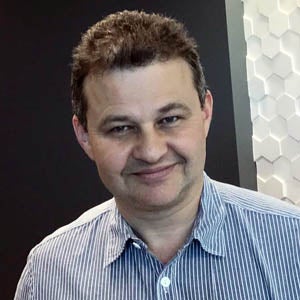
Professor
Rice University
Abstract: Cancer is a genetic disease that results from accumulation of unfavorable mutations. As soon as genetic and epigenetic modifications associated with these mutations become strong enough, the uncontrolled tumor cell growth is initiated, eventually spreading through healthy tissues. Clarifying the dynamics of initiation is critically important for understanding the mechanisms of the cancer appearance. Here we present a new theoretical approach, stimulated by analogy with chemical processes, to evaluate the dynamic processes associated with the cancer initiation. It is based on a discrete-state stochastic description of the formation of tumors as a fixation of unfavorable mutations. Using a first-passage analysis, the probabilities for the cancer to appear and the average times before it happens are explicitly calculated. It is predicted that the slowest cancer initiation dynamics is observed for neutral mutations, while it is fast for both advantageous and, surprisingly, disadvantageous mutations. The method is applied for estimating the initiation times from clinical data for 28 different types of cancer. It is found that the higher probability of the cancer to occur does not necessary lead to the fast times of starting the cancer. This suggests that both lifetime risks and cancer initiation times must be used to evaluate the possibility of appearance of the cancer tumor. The relations of the cancer initiation processes with dynamics of chemical reactions is discussed.
Publications (Google Scholar Citations)
h-index: 43 Total Articles: 209 Total Citations: 6078 (Web of Science, Jul. 2021)
h-index: 47 Total Citations: 8337 (Google Scholar Citations, Jul. 2021)
Department Seminar
Tuesday, August 10, 3:30 - 4:30pm, WEL 2.122
Associate Professor
University of Virginia
The Hsu Laboratory focuses on the discovery of bioactive molecules. A central theme of our group is the development of covalent probes and inhibitors for investigating protein and lipid activity. Our research is multidisciplinary and uses a combination of organic synthesis, bioanalytical chemistry, and bioorganic chemistry. Current efforts include identifying new reactive chemistry, quantifying ligandability of proteins on a proteomic scale, and deciphering structure and function of membrane signals in living systems. Ultimately, we aim to develop new molecules to enable chemical biology and therapeutic discovery.
Publications (Google Scholar Citations)
ORCiD: https://orcid.org/0000-0001-5620-3972
h-index: 21 Total Articles: 47 Total Citations: 1466 (Web of Science, Feb. 2021)
h-index: 26 Total Citations: 2347 (Google Scholar Citations, Jul. 2021)
Organic Seminar (jointly with Chemical Biology & Medicinal Chemistry in the College of Pharmacy)
Friday, June 4, 3:30 - 4:30pm, ZOOM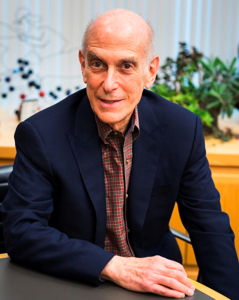
Arthur Amos Noyes Professor Emeritus
Massachusetts Institute of Technology
Biography (National Academy of Sciences)
Current cancer research within the Lippard lab is focused on understanding platinum anticancer drugs and developing non-classical anticancer complexes, including monofunctional Pt(II), dual threat Pt(IV), and other third row transition metal complexes. Our work has influenced clinical outcomes by revealing the mechanism of action of platinum drugs and holds promise to provide cures, considering the potential of new agents to display better efficacy, reduced drug resistance or tumor recurrence in comparison to current anticancer treatments. Research on platinum complexes led to the co-founding of Blend Therapeutics in 2011. Blend (now Placon Therapeutics) recently had an IND cleared by the FDA to take a new platinum compound into a Phase I clinical trial for cancer treatment.
The discovery of phenanthriplatin, [Pt(NH3)2(phenanthridine)Cl]+, a monofunctional Pt(II) complex provided a cisplatin derivative with significantly improved in vitro anticancer activity over the FDA approved platinum drugs with complimentary spectrum of activity. The mode of action for phenanthriplatin involved DNA damage followed by transcription stalling, as a result of the bulky phenanthridine ligand impeding procession of RNA Pol II. A role in ribosomal biosynthesis stress has also been implicated. Incorporation of phenanthriplatin into tobacco mosaic virus in collaborative work allowed this potency to be translated to efficacy in animals. Detailed structural investigations into phenanthriplatin binding to its biological targets are ongoing.
Consistent with our observation that bifunctional adduct formation is not required to impart the anticancer activity of metal constructs, the Lippard lab began investigations into the effects of octahedral transition metal complexes, focusing specifically on high oxidation state osmium and rhenium complexes. Osmium(VI) nitrido complexes containing a variety of bidentate ligands were initially accessed and found to demonstrate excellent anticancer activity. Further investigations revealed that osmium(VI) nitrido complexes selectively kill cancer stem cells over bulk tumor cells, through a combination of DNA damage and endoplasmic reticulum stress. In addition, rhenium(V) oxo complexes also containing bidentate ligands were shown to selectively kill cancer cells over normal cells by programmed necrosis, commonly referred to as necroptosis.
Another active area of research within the Lippard lab is the development of novel delivery strategies for Pt anticancer agents. Passive and active cancer targeting approaches have been employed including biodegradable nanoparticles, self-assembled platinum-based nanoclusters, and the use of glucose, folic acid, and peptides as homing devices.
Platinum(IV) prodrugs show increased inertness with respect to platinum(II) and must undergo reduction before aquation and subsequent reaction with a biological nucleophile. As a result, the circulation lifetime of Pt(IV) species in blood can be extended and can simultaneously target elements of cancer cell biology that distinguish them from normal cells of which we term “dual threat”. A variety of dual threat constructs have been employed in the Lippard lab to impact efficacy. Notable among them are mitochondria targeting constructs, amphiphilic platinum (IV) constructs that bind human serum albumin non covalently for delivery into cancer cells, and Pt-immune checkpoint inhibitor constructs that preferentially target the immunosuppressive enzyme, indoleamine-2,3-dioxygenase for cancer immuno-chemotherapy.
h-index: 100 Total Articles: 407 Total Citations: 40,522 (Web of Science, June 2021)
Inorganic Seminar
Wednesday, May 5, 3:30 - 4:30pm, ZOOM
Assistant Professor
University of Delaware
Abstract: Porosity in network solids, including zeolites, activated carbons, and metal-organic frameworks, has been widely interrogated for decades. In molecular metal-organic systems, however, it is a relatively novel phenomenon. This is somewhat surprising given the fact that porous organic cages can display surface areas that rival those of metal-organic frameworks. This talk will focus on the design, synthesis, and characterization of highly porous coordination cages for small molecule storage applications. Further, it will detail the intriguing interplay between surface area and solubility in a class of paddlewheel-based cages. We have recently shown that these materials, which conceptually serve as soluble metal-organic framework analogs, display impressive porosity under specific synthesis and activation conditions. Although these cages are typically amorphous upon desolvation, the utilization of pillaring ligands endows the materials with high crystallinity and compatibility with diffraction methods for the identification and optimization of gas binding sites. The design, synthesis, and characterization of an exciting new class of porous materials, porous salts, will also be discussed.
Publications (Google Scholar Citations)
h-index: 28 Total Articles: 64 Total Citations: 9493 (Web of Science, Feb. 2021)
h-index: 29 Total Citations: 11,129 (Google Scholar Citations, Feb. 2021)
Analytical & Physical Seminar
Thursday, April 29, 3:30 - 4:30pm, ZOOM
Assistant Professor
University of Oregon
Abstract: Molecules, polymers, and nanocrystals can form the active layer in electronic devices such as photovoltaics and light-emitting diodes. Their electronic structure and excited state dynamics dictate their function and suitability for these applications. Transient absorption (TA) spectroscopy is used to measure these properties, and has provided remarkable insights into the behavior and function of electronic materials. However, multiple minutes-to-hours are typically required to perform these measurements, making it difficult to accurately measure the excited state dynamics of unstable and evolving materials systems such as electronic materials during their synthesis or deposition into a thin film. In this seminar, I will introduce a novel implementation of TA spectroscopy that can measure transient spectra in 8 ms, with good signal-to-noise achieved in ~30 s. This new technique is applied to the study of organic molecules during their aggregation into a thin film, as well as lead-halide perovskite nanocrystals during their synthesis. These examples demonstrate that in addition to providing an understanding of how excited state dynamics change during materials formation, TA signals measured in situ can reveal new insights into the mechanisms of complex materials formation processes.
Publications (Google Scholar Citations)
h-index: 17 Total Citations: 2568 (Google Scholar Citations, Apr. 2021)
Friday, April 23, 3:30 - 4:30pm, ZOOM
Research Associate
University of Wisconsin Madison
Join us to discuss the role of DEI in chemistry outreach, as informed by interviews of graduate students who actively participated in outreach and how gender, race/ethnicity, educational background, and other outreach events play a role in their purpose for doing outreach and their outreach practices.
Analytical & Physical Seminar
Thursday, April 22, 3:30 - 4:30pm, ZOOM
Assistant Professor
Colorado State University
Abstract: Energy needs and environmental trends demand a large-scale transition to clean, renewable energy. Nanostructured materials are poised to play an important role in this transition. However, nanomaterials are chemically and structurally heterogeneous in size, shape, and surface structural features. My research group focuses on understanding the correlation between nanoparticle chemistry/structure and functional properties. The first part of my talk will focus on elucidating charge storage mechanisms in nanoscale materials, which underlies the performance of electrochemical technologies such as batteries and smart windows. I will discuss our high-throughput electro-optical imaging method that measures the battery-like and capacitive-like (i.e., pseudocapacitive) charge storage contributions in single metal oxide nanoparticles. I will present our recent single particle-level measurements that show (1) individual particles exhibit different charge storage mechanisms at the same applied potential and (2) particle size-dependent pseudocapacitive charge storage properties. The second part of my talk will focus on solar energy conversion using ultrathin semiconductors such as monolayer-thick (ML) two-dimensional (2D) materials such as MoS2 and WS2. ML semiconductors represent the ultimate miniaturization limit for lightweight and flexible power generation applications. However, the underlying solar energy conversion processes in 2D materials is not entirely understood. We developed a correlated laser reflection and scanning photocurrent microscopy approach to study how layer thickness and surface structural features (edges versus basal planes) influence solar energy conversion efficiency. I will highlight our photocurrent microscopy study that revealed how layer stacking order in heterojunction photoelectrodes influences charge separation, transport, and recombination pathways.
Publications (Google Scholar Citations)
h-index: 14 Total Articles: 34 Total Citations: 1566 (Web of Science, Apr. 2021)
h-index: 16 Total Citations: 1967 (Google Scholar Citations, Mar. 2021)
Organic and Analytical & Physical Seminar
Monday, April 12, 3:30 - 4:30pm, ZOOM
Assistant Professor
University of Miami
Abstract: As a product of the dynamic equilibrium between solubilized building blocks and self-assembled structures, supramolecular architectures are fragile compositions where minor changes in temperature, solvent dielectric, and building-block concentration can trigger the dismantlement of superstructures and concomitant loss of their emergent properties. Developing molecular strategies to covalently polymerize superstructures can provide entirely new nanoscale platforms with which to elucidate structure-function properties that remain elusive by current supramolecular methodologies. During this seminar, we will introduce design principles to reticulate 1-dimensional supramolecular polymers and the extent to which this novel approach can be leveraged to modulate the (opto)electronic properties of nanoscale objects. For example, we will show that tethering, or “locking-in”, π-conjugated supramolecular polymers enforces the formation of structurally well-defined nanoscale objects that feature a conduction band energy stabilized by more than 100 meV with respect to that of the unlocked precursors. Exploiting transient absorption spectroscopy and spectroelectrochemistry, we will discuss the properties of the excited state products formed following photoexcitation and correlate them to the structural properties of the molecular lockers with which the aggregates are tethered. We will also introduce novel design principles to regulate excitonic coupling as a function of locking strategies and new avenues to capture out-of-equilibrium intermediates. An additional aspect of our work resides on the redox-assisted self-assembly of water-soluble, π-conjugated chromophores. We exploit this novel supramolecular tool to access out-of-equilibrium intermediates through which to navigate the aggregation free energy landscapes and engineer supramolecular assemblies kinetically trapped in local energy minima. Through a combination of microscopy and spectroscopy studies, we will show that the structure-function properties of kinetically trapped superstructures differ markedly with respect to those elucidated for the parent, equilibrium assemblies. Both aspects of these studies demonstrate that the ability to modulate the electronic structure of nanoscale-objects, used in conjunction with facile hierarchical organization, offers exceptional promises for the development of optoelectronic materials.
Publications (Google Scholar Citations)
h-index: 17 Total Articles: 38 Total Citations: 747 (Web of Science, Apr. 2021)
h-index: 18 Total Citations: 835 (Google Scholar Citations, Mar. 2021)
Analytical & Physical Seminar
Thursday, March 4, 3:30 - 4:30pm, ZOOM
Professor, Chemistry; Electrical & Computer Engineering
Rice University
Abstract: A surface plasmon in a metal nanoparticle is the coherent oscillation of the conduction band electrons leading to both absorption and scattering as well as strong local electromagnetic fields. These fundamental properties have been exploited in many different ways, including surface enhanced spectroscopy and sensing, photothermal cancer therapy, and color display generation. The performance of plasmonic nanoparticles for a desired application not only depends on the particle size and shape, but is tunable through nanoparticle interactions on different length scales that support near- and far-field coupling. Chemical synthesis and assembly of nanostructures are able to tailor plasmonic properties that are, however, typically broadened by ensemble averaging. Single particle spectroscopy together with correlated imaging is capable of removing heterogeneity in size, shape, and assembly geometry and furthermore allows one to separate absorption and scattering contributions. In this talk I will discuss our recent work on understanding the radiative, non-radiative, chiral, and mechanical properties of individual and coupled plasmonic nanostructures.
Publications (Google Scholar Citations)
h-index: 67 Total Citations: 33583 (Google Scholar Citations, Feb. 2021)
Department Seminar
Friday, February 26, 3:30 - 4:30pm, ZOOM
Associate Professor
University of Virginia
Abstract: The Hsu Laboratory develops and applies chemical proteomic and mass spectrometry approaches for the global study of protein and lipid biology. Lipids, an underexplored class of biomolecules, are ubiquitous chemical signals for basic communication in biology and are valuable targets in medicine. Efforts from the group have advanced basic understanding of how enzymes select lipid substrates based on fatty acyl composition to regulate specificity of metabolism and signaling in cells. Findings from the group have identified metabolic ‘checkpoints’ of diacylglycerol signaling that can be manipulated with small molecule inhibitors to attenuate inflammation or activate immune responses to cancer. More recently, the group developed sulfonyl-triazoles as a new class of electrophiles that selectively react with tyrosine residues on proteins through sulfur-triazole exchange (SuTEx) chemistry. The broader goal of this new research direction is to expand the reach of chemical proteomics to target – for potential therapeutic benefit – protein functions (e.g. protein-protein and protein-nucleotide recognition) that have been challenging to investigate with traditional methods.
Publications (Google Scholar Citations)
ORCiD: https://orcid.org/0000-0001-5620-3972
h-index: 21 Total Articles: 47 Total Citations: 1466 (Web of Science, Feb. 2021)
h-index: 25 Total Citations: 2152 (Google Scholar Citations, Feb. 2021)
Analytical & Physical Seminar
Thursday, February 25, 3:30 - 4:30pm, ZOOM
Professor, Electrical & Computer Engineering
Rice University
Abstract: Recent efforts by our group and others have shown the promise of applying single molecule methods to link mechanistic detail about protein adsorption to macroscale observables. When we study one molecule at a time, we eliminate ensemble averaging, thereby accessing underlying heterogeneity. However, we must develop new methods to increase information content in the resulting low density and low signal-to-noise data and to improve space and time resolution. I will highlight recent advances in super-resolution microscopy for quantifying the physics and chemistry that occur between target proteins and stationary phase supports during chromatographic separations. My discussion will concentrate on the newfound ability of super-resolved single protein spectroscopy to inform theoretical parameters via quantification of adsorption-desorption dynamics, protein unfolding, and nano-confined transport. Additionally, I will discuss using phase manipulation to encode temporal and 3D spatial information, and the opportunities and challenges associated with such imaging methods
Publications (Google Scholar Citations)
h-index: 30 Total Articles: 90 Total Citations: 2907 (Web of Science, Feb. 2021)
h-index: 36 Total Citations: 4039 (Google Scholar Citations, Feb. 2021)
Friday, February 5, 3:30 - 4:30pm, ZOOM
Director of Education, Outreach, and Diversity
National Science Foundation Center for Genetically Encoded Materials
Abstract: The underrepresentation of women and some racial and ethnic groups remains a significant issue in STEM. Inclusivity and sense of belonging—the extent to which an individual feels accepted in a community—are two factors known to predict retention throughout academia, particularly among women and marginalized students in STEM. In order to devise strategies that can be used to diversify the highest levels of academia, it is critical to first understand the factors that negatively impact sense of belonging and inclusion at the graduate level. In this presentation, we will discuss the methods used to assess and raise awareness of the challenges facing graduate students, postdocs, and faculty within an R01 Chemistry Department. In particular, we will talk about how the department’s own data from academic climate and sense of belonging surveys were used to design and implement interventions to make the Department of Chemistry more welcoming, as well as how other research-focused academic communities can modify these methods to promote positive, lasting cultural change.
Bio: Dr. Stachl (she/ella) is the Director of Education, Outreach, and Diversity at the National Science Foundation Center for Genetically Encoded Materials (C-GEM). She earned her Ph.D. in Chemistry in 2020 from the University of California, Berkeley. At the beginning her Ph.D., she investigated the structure and dynamics of water droplets. Her desire to make the field of chemistry more diverse and inclusive led her to switch her research focus to chemistry education. Her dissertation work centered on developing methods to understand the issues that negatively affect diversity, inclusion, and belonging within graduate communities, and designing interventions to directly combat these disparities. Now, Chrissy designs outreach and professional development programs for C-GEM scientists and is doing research to better understand the relationship between mentoring and sense of belonging. Chrissy graduated from the University of Washington in 2014 with dual B.S. degrees in Chemistry and Neuroscience.
A&P Seminar
Thursday, January 28, 3:30 - 4:30pm, ZOOM
Associate Professor
UC San Diego
Abstract: Molecular vibrational polaritons are hybrid half-light, half-matter quasiparticle. This hybrid quasiparticles not only inherit properties of both photons and matters, but also processes unique new photonic and molecular phenomena, including tilting chemical potential landscapes of reactions, adding new energy transfer pathways and strong photonic interactions. Many of these developments hinge on fundamental understanding of its physical properties of molecular vibrational polaritons. Using pump probe and 2D IR spectroscopy to study vibrational-polaritons, we obtained results that advance both polariton and spectroscopy fields. I will discuss a few phenomena of IR molecular vibrational-polaritons due to their delocalization and hybridized nature: 1. A macroscopic dependent optical nonlinearity of polaritons. 2. Cavity-enabled intermolecular energy transfer and inter-cavity interactions. 3. Dynamics of polariton and hot vibrational modes of dark states in cavities. 4. Intermolecular nonlinear interactions between polaritons resides in neighboring cavities. These results will have significant implications in novel infrared photonic devices, lasing, molecular quantum simulation, as well as new chemistry by tailoring potential energy landscapes.
Publications (Google Scholar Citations)
ORCID: https://orcid.org/0000-0002-7702-0187
h-index: 18 Total Articles: 39 Total Citations: 997 (Web of Science, Dec. 2020)
h-index: 21 Total Citations: 1597 (Google Scholar Citations, Dec. 2020)
Department Seminar
Friday, January 22, 3:30 - 4:30pm, ZOOM
Liew Family Professor of Molecular Engineering
University of Chicago / Argonne National Laboratory
We explore light-activated processes in materials and molecules using first principles, quantum mechanical calculations. Our aim is to address two outstanding challenges: designing sustainable materials to efficiently capture and store solar energy, and predicting systems, for example spin qubits, to build novel sensors and computers, and move in earnest into the quantum information age.
Publications (Google Scholar Citations)
h-index: 69 Total Articles: 277 Total Citations: 20,420 (Web of Science, Jan. 2021)
h-index: 89 Total Citations: 32,189 (Google Scholar Citations, Jan. 2021)
The Seminars page is brought to you by the University Libraries. Our intent is to provide a quick profile of our guest speakers, links to their research group sites, recent publications, author metrics, and other information to enhance your engagement with the guests.

This work is licensed under a Creative Commons Attribution-NonCommercial 4.0 Generic License.